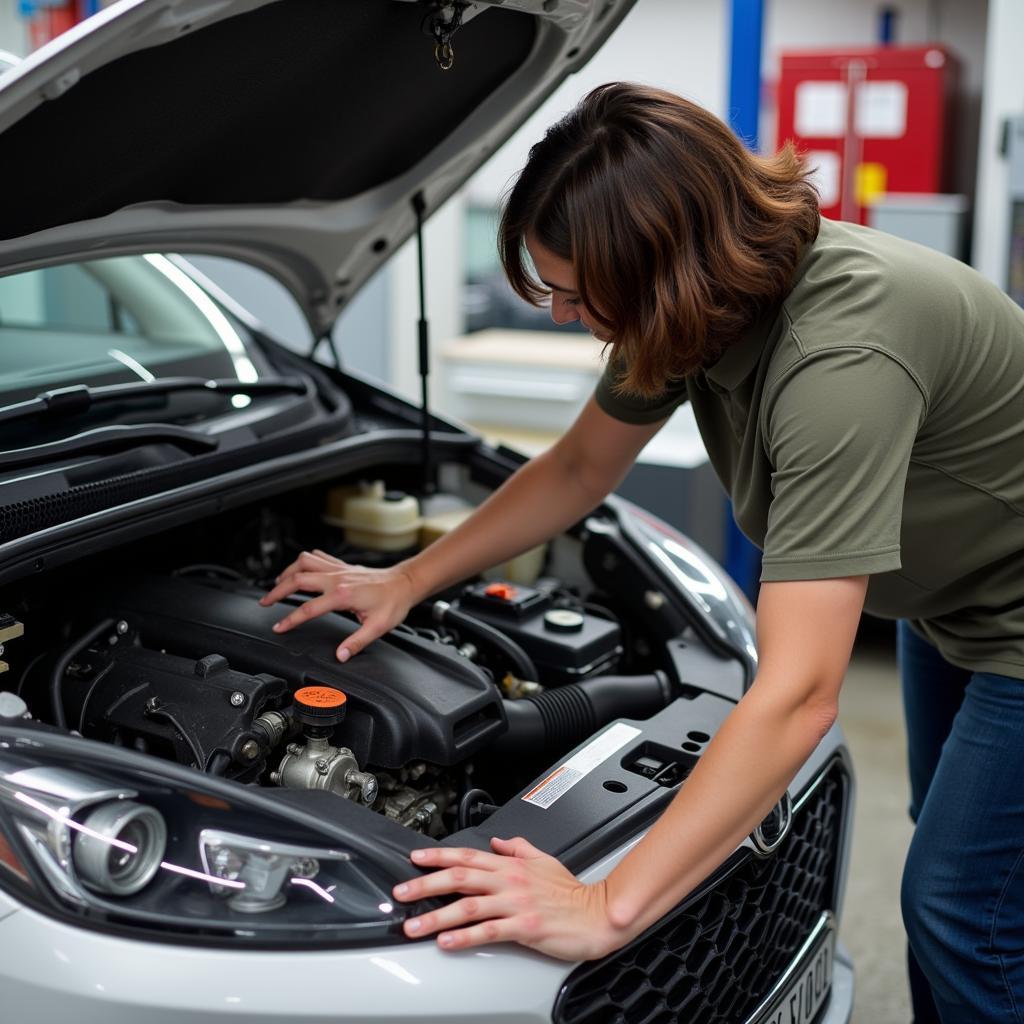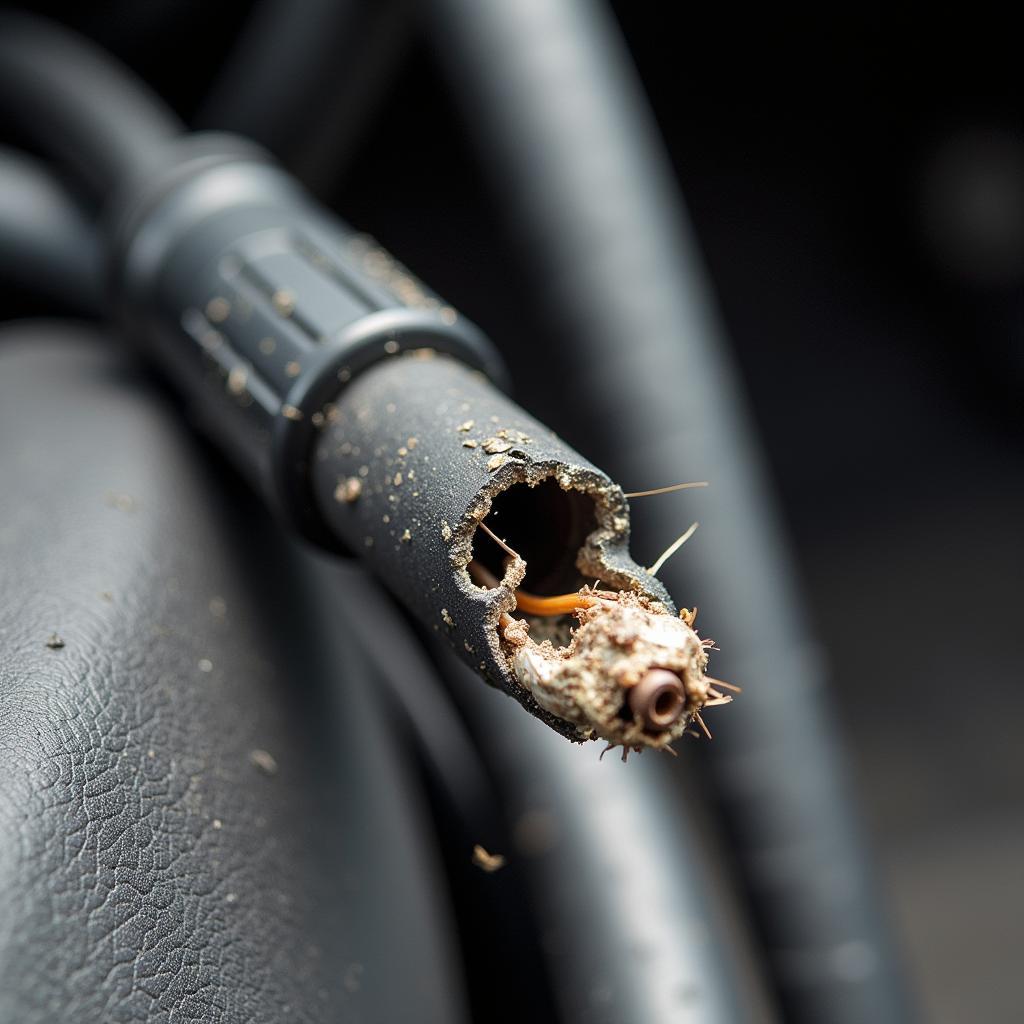Buying a used car can be a great way to save money, but it’s crucial to know what to look for to avoid inheriting someone else’s problems. Finding potential issues before you buy can save you thousands of dollars in repairs down the road. This comprehensive guide will equip you with the knowledge and tools to confidently inspect a used car and identify any red flags.
Knowing how to effectively evaluate a used car can prevent future headaches. For instance, understanding the different sounds mechanical problems on cars make can be an invaluable tool. This guide will walk you through a step-by-step process, covering everything from the initial visual inspection to a thorough mechanical check.
Visual Inspection: First Impressions Matter
Begin your inspection with a walk around the car. Look for any signs of damage, such as dents, scratches, or rust. Pay close attention to the panel gaps; uneven gaps can indicate previous accident damage. Check the tires for uneven wear, which could signal alignment issues. Also, examine the paint for inconsistencies in color or texture, suggesting repainting due to prior damage.
Under the Hood: A Deeper Dive
Pop the hood and inspect the engine bay. Look for leaks, corrosion, and worn belts or hoses. Check the fluids, including engine oil, coolant, brake fluid, and power steering fluid. Low or dirty fluids can be a sign of neglect. If possible, start the engine and listen for any unusual noises.
 Engine Bay Inspection for a Used Car
Engine Bay Inspection for a Used Car
Test Drive: Feeling the Road
A test drive is essential when evaluating a used car. Pay attention to the car’s handling, braking, and acceleration. Listen for any unusual noises, such as squeaks, rattles, or knocks. Does the car pull to one side? Are there any vibrations? These can all be indicators of underlying problems. Don’t hesitate to test all the features, including the air conditioning, radio, and power windows. Identifying car electrical problems early on can save you significant expense.
Professional Inspection: An Expert Opinion
While you can perform a basic inspection yourself, having a qualified mechanic inspect the car is highly recommended. A mechanic can identify potential problems that you might miss. They can also provide a more detailed assessment of the car’s overall condition. This is especially valuable when you are considering a more complex issue, such as understanding How To Find Problems With Used Cars related to the transmission or engine. Don’t underestimate the importance of a professional opinion.
 Mechanic Inspecting Used Car on a Lift
Mechanic Inspecting Used Car on a Lift
Documentation Review: The Paper Trail
Don’t forget to review the car’s documentation, including the title and maintenance records. The title will tell you if the car has been salvaged or rebuilt. Maintenance records can provide valuable insights into the car’s history and any previous repairs. Some car sales point out problems of car and having a documented history can help validate their claims. It also allows you to see if the car has been properly maintained. This is especially important for vehicles with known issues, like some of the cars with most problems 2015.
Conclusion: Making an Informed Decision
Knowing how to find problems with used cars empowers you to make an informed purchase decision. By following these steps, you can significantly reduce the risk of buying a car with hidden problems. Remember, a thorough inspection can save you time, money, and frustration in the long run. Contact us at AutoTipPro for further assistance. Our phone number is +1 (641) 206-8880, and our office is located at 500 N St Mary’s St, San Antonio, TX 78205, United States.
 Used Car Paperwork Inspection
Used Car Paperwork Inspection
FAQ
- What are the most common problems with used cars? Common issues include brake problems, transmission issues, and electrical malfunctions.
- How can I check for frame damage on a used car? Look for uneven panel gaps, mismatched paint, and signs of repair work.
- Is it worth getting a pre-purchase inspection? Absolutely! A professional inspection can identify hidden problems and save you money in the long run.
- What should I look for during a test drive? Pay attention to the car’s handling, braking, acceleration, and listen for any unusual noises.
- How can I tell if a used car has been in an accident? Check the Carfax report and look for signs of repair work, such as mismatched paint or uneven panel gaps.
- What are some red flags to watch out for when buying a used car? Be wary of sellers who are reluctant to let you have the car inspected or who pressure you to buy quickly. If something feels off about the deal, trust your gut and walk away from the deal. If you’re considering a rental conversion, be aware of potential issues, like those often reported with dollar rent a car problems.
- How can I negotiate a better price on a used car? Research the car’s market value and be prepared to walk away if the seller isn’t willing to negotiate.







Leave a Reply